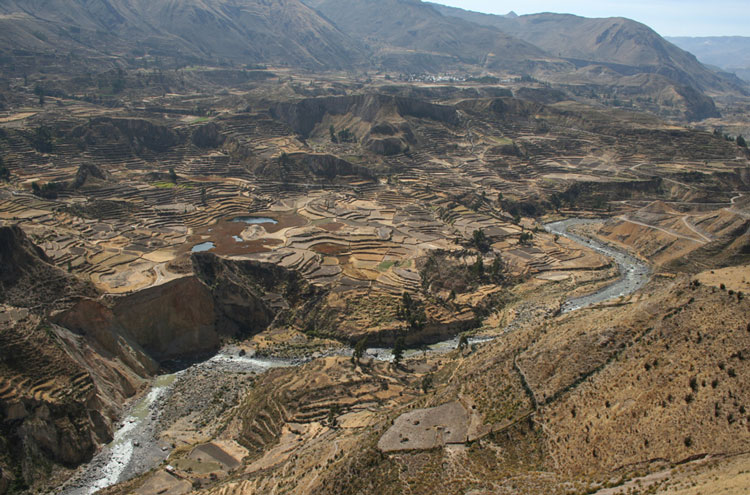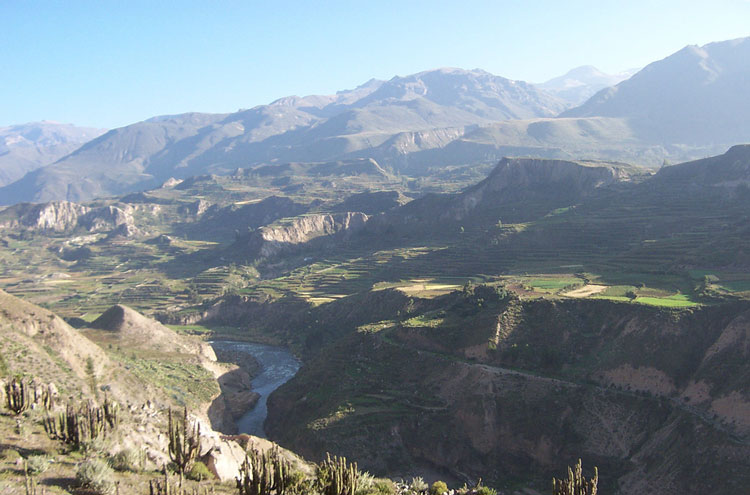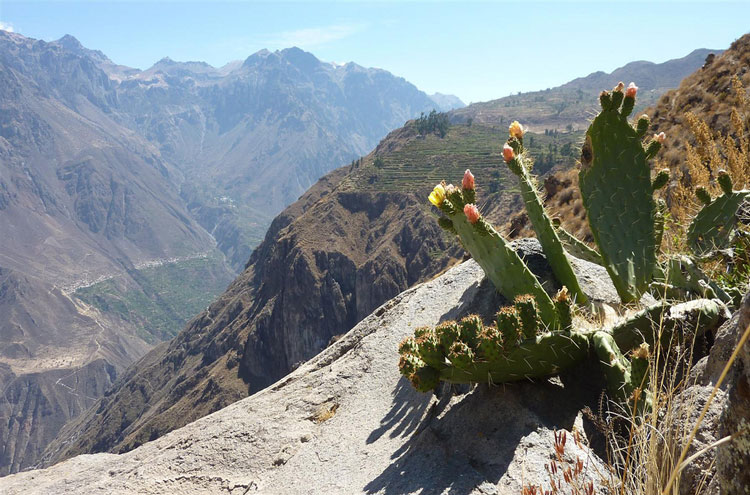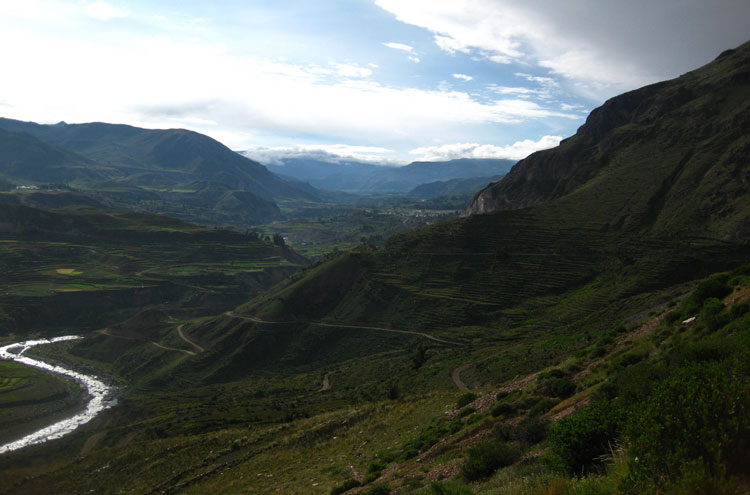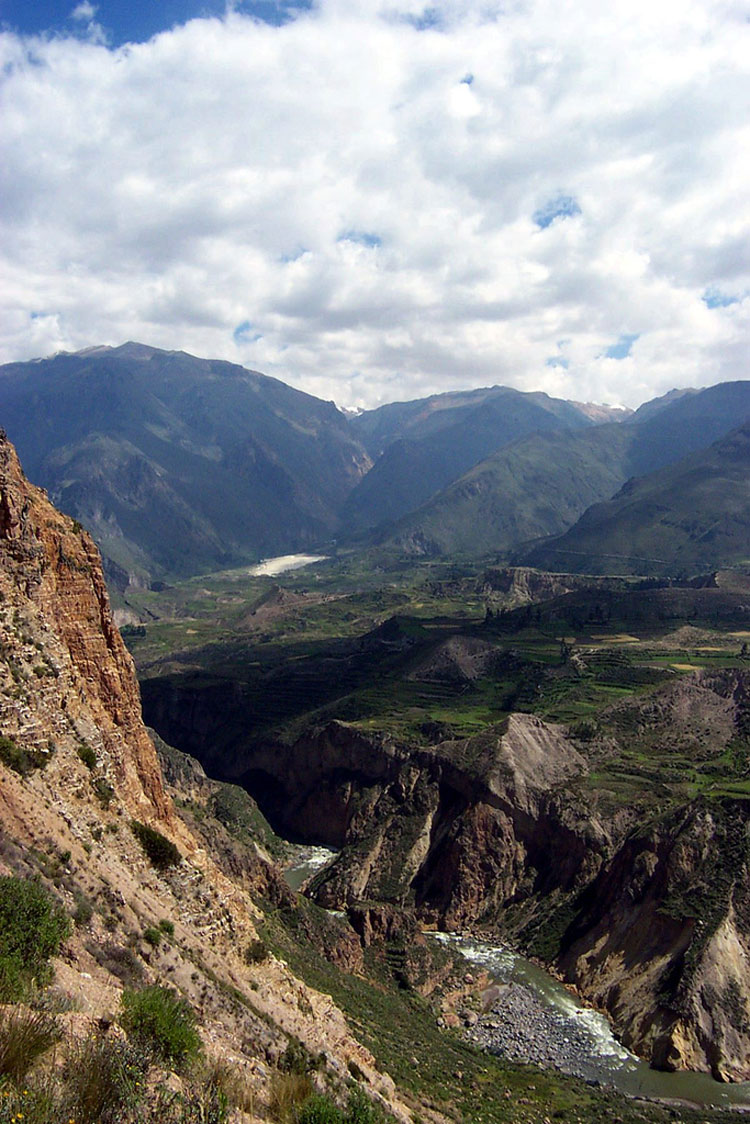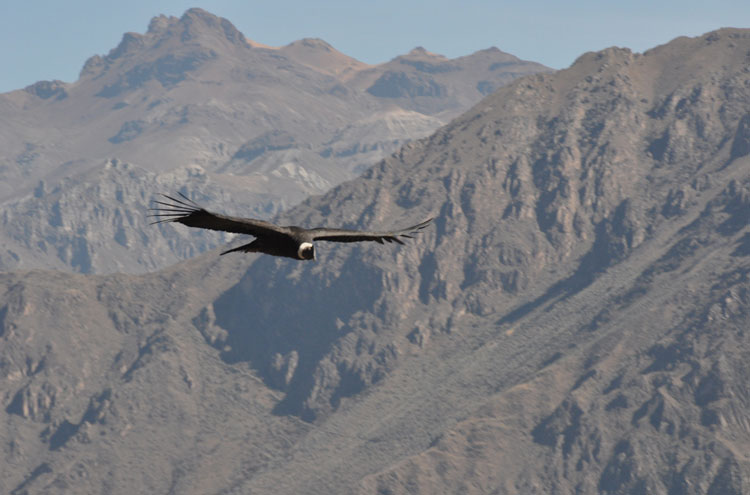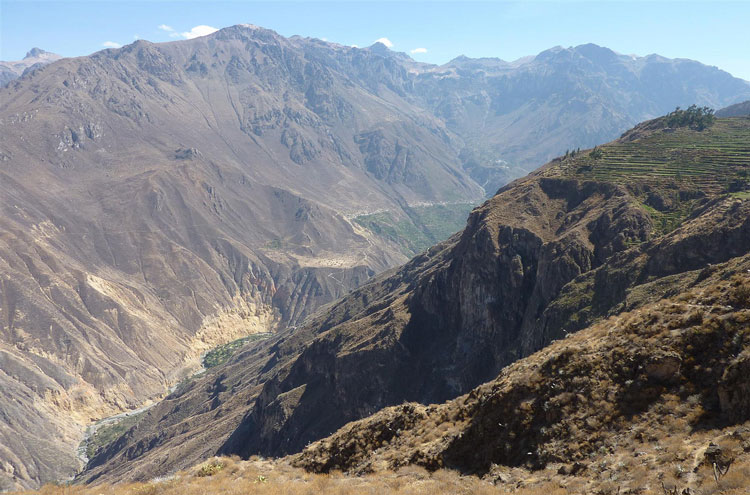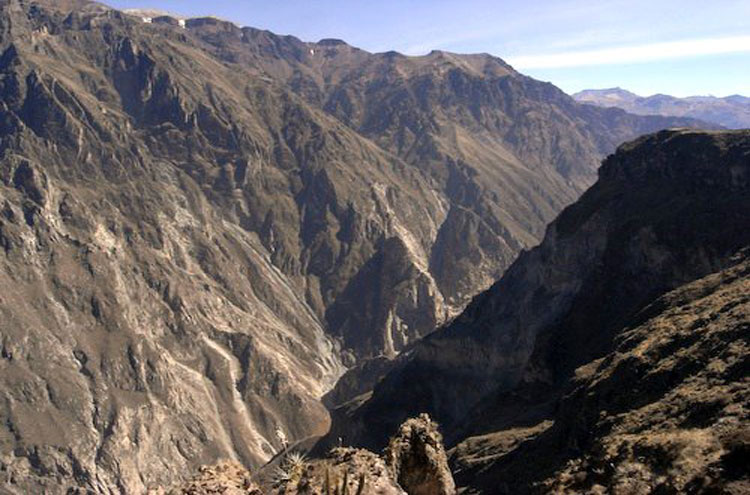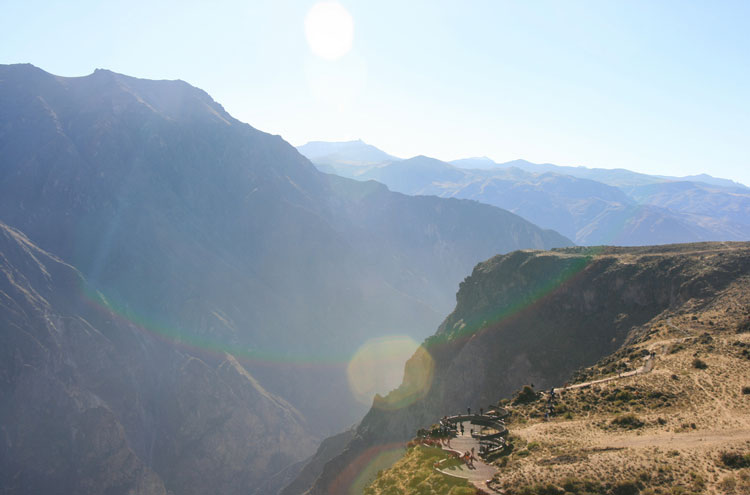Colca Canyon
Key information: Colca Canyon 
- Claimed to be the second deepest canyon in the world after nearby Cotahuasi, the Colca Canyon is famous for the huge Andean condors which can be seen soaring above it.
- With the dramatic volcano Nevado Ampato towering just 24km from the deepest part of the Rio Colcas canyon, the scale and majesty of the landscape here is stunning.
- Enjoy lush greenery, wildflowers and waterfalls as well as the cacti which flourish in the arid conditions of the Andean Cordilleras rain shadow.
- Discover forgotten villages, hike along old Inca trails and visit pre-Inca ruins.
- Altitude can be a problem here ensure that you are fully acclimatized.
Walkopedia rating
- Walkopedia rating90
- Beauty34
- Natural interest17
- Human interest8
- Charisma34
- Negative points3
- Total rating90
- Note: Negs: altitude.
Vital Statistics
- Length: Variable
- Maximum Altitude: 3,280m to 5,100m
- Level of Difficulty: Strenuous
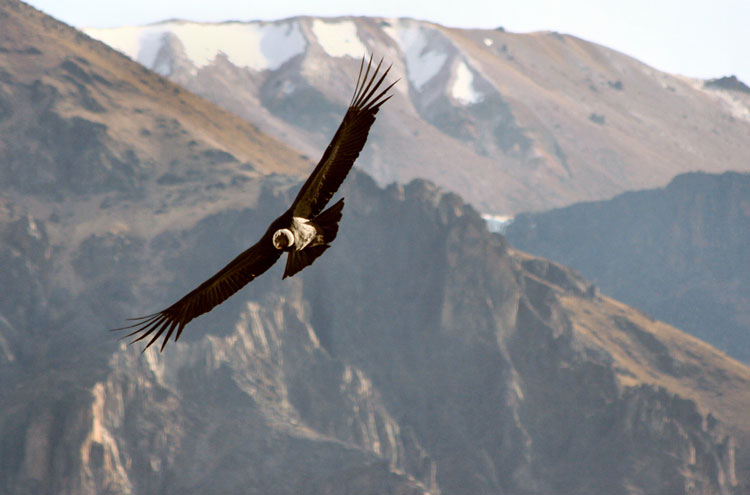
WALK SUMMARY
Situated about 150km to the northwest of Arequipa, the Colca Canyon was long considered to be the worlds deepest. Although that title has now been transferred to the nearby Cotahuasi Canyon, this stunning and diverse area still pulls in many visitors.
Its not difficult to see why - the beauty and drama of Colca is hard to equal. The steep descents of the cliffs and the dangerous rapids of the river are countered by the gorgeous serenity of the oasis below Cabanaconde. Deep in the canyon, the climate is almost tropical, harbouring ferns, palm trees and even some orchids. On the plateau and higher slopes the air is cool and dry, but the depth of the chasm and frequent sunny weather creates updrafts, on which the areas famous condors soar.
It is not only modern trekkers who have been attracted to the area. In many rocky shelters within the canyon, paintings and carvings testify to nomadic hunters having passed through here 5,000 years ago, and dating from a more recent period, the Colca Canyon has some of the most extensive agricultural terracing in Peru. Although often seen as synonymous with the Incas, the Collahua people had been practicing terraced farming in the valley for many years before the arrival of the Inca empire.
From more recent history, it is possible to find impressive colonial churches, built using the proceeds of the gold and silver mines dotted around the canyon.
Some of the surrounding volcanoes have a spiritual significance for local people, including Mt Mismi (5,597m), considered to be the true source of the Amazon; Mt Coropuna, the third highest mountain in Peru, and Mt Ampato, on the high slopes of which the Inca Mummy, nicknamed Juanita, was found.
There are a wide variety of superb walks which can be done, ranging from longer 5-6 day treks to short day walks. Organized expeditions tend to take in the surrounding area as well; if you dont have long then much of the canyons splendor can be gleaned from a day walk to the oasis from Cabanaconde see Routes.
Other accounts: share your experiences
Your comments on this walk, your experiences and suggestions, and your photos are very welcome. Where appropriate, you will be credited for your contribution.
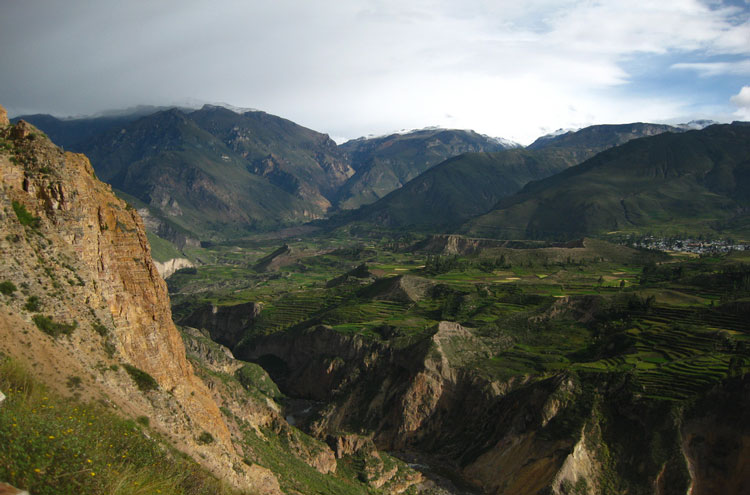
We have a lot of helpful practical information and tips about this walk, covering everything from the best books and maps, to timing and weather, geting there, possible problems, whether you need a guide and where to find them, and useful websites. This section is only open to members.
Membership is FREE AND JOINING TAKES 30 SECONDS. To login or sign up click here
Safety and problems: All walks have inherent risks and potential problems, and many of the walks featured on this website involve significant risks, dangers and problems. Problems of any sort can arise on any walk. This website does not purport to identify any (or all) actual or potential risks, dangers and problems that may relate to any particular walk.
Any person who is considering undertaking this walk should do careful research and make their own assessment of the risks, dangers and possible problems involved. They should also go to “Important information” for further important information.
Anyone planning an expedition to this place should see further important information about this walk.
Safety and problems: All walks have inherent risks and potential problems, and many of the walks featured on this website involve significant risks, dangers and problems. Problems of any sort can arise on any walk. This website does not purport to identify any (or all) actual or potential risks, dangers and problems that may relate to any particular walk.
Any person who is considering undertaking this walk should do careful research and make their own assessment of the risks, dangers and possible problems involved. They should also go to “Important information” for further important information.
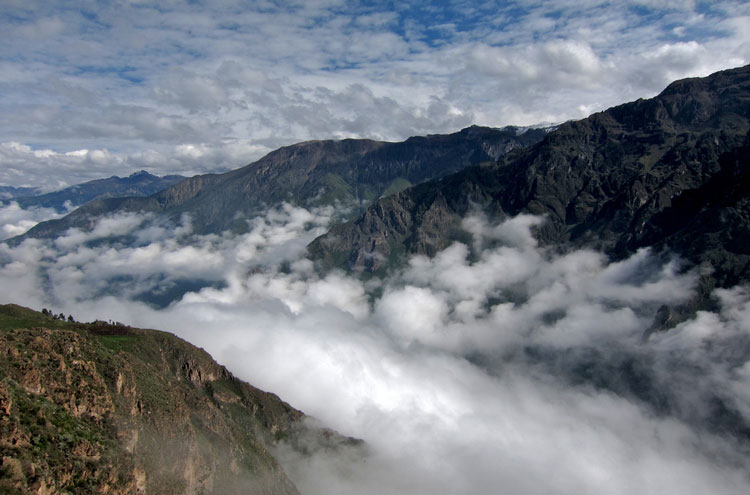
OTHER ACCOUNTS
share your experiences
Add your experiences, suggestions and photos. We would be delighted to receive your writing and ideas (which will be attributed appropriately where published).
Anyone planning an expedition to this place should see further important information about this walk.
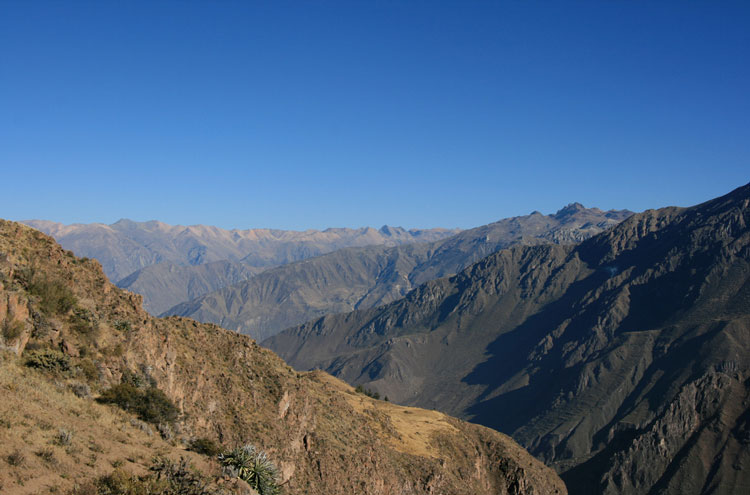
Responsible travel matters, a lot. How you travel will make a real difference - for better or worse. PLEASE consider this when making plans. Read more



